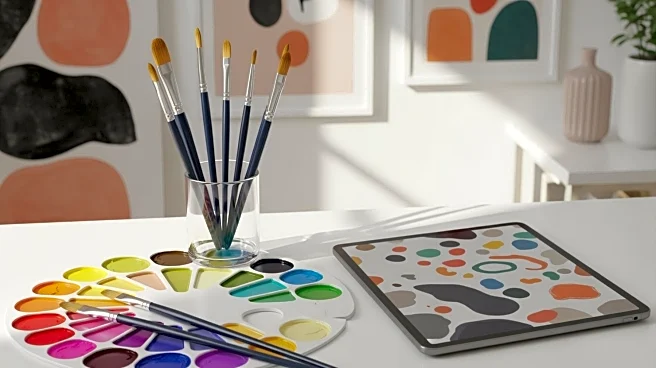What's Happening?
A growing number of artists are choosing to bypass traditional galleries, opting instead for independent sales and marketing strategies. This trend is driven by the desire for greater control over their
work and financial benefits, as galleries typically take a significant commission. Artists like Damien Hirst and Banksy have paved the way for this approach, and now emerging artists are following suit, utilizing social media platforms like Instagram to reach audiences directly. This shift is reshaping the art market, allowing artists to maintain more autonomy and connect with collectors without intermediaries.
Why It's Important?
The move towards independence in the art world is significant as it challenges the traditional power dynamics between artists and galleries. By selling directly to collectors, artists can retain a larger portion of their earnings and have more control over their brand and artistic direction. This trend could lead to a more democratized art market, where artists have greater agency and flexibility in how they present and sell their work. It also highlights the evolving role of social media in the art industry, providing artists with new avenues for exposure and sales.
What's Next?
As more artists embrace independence, the traditional gallery model may need to adapt to remain relevant. Galleries might explore new ways to support artists, such as offering flexible representation or collaborating on unique projects. The art market could see increased diversity in how art is presented and sold, with pop-up exhibitions and online platforms becoming more common. Artists will continue to explore innovative ways to engage with audiences and expand their reach.
Beyond the Headlines
This trend reflects broader shifts in creative industries, where individuals seek to bypass traditional gatekeepers and leverage digital platforms for direct engagement. It raises questions about the future of galleries and the role they will play in an increasingly digital and decentralized art world.













